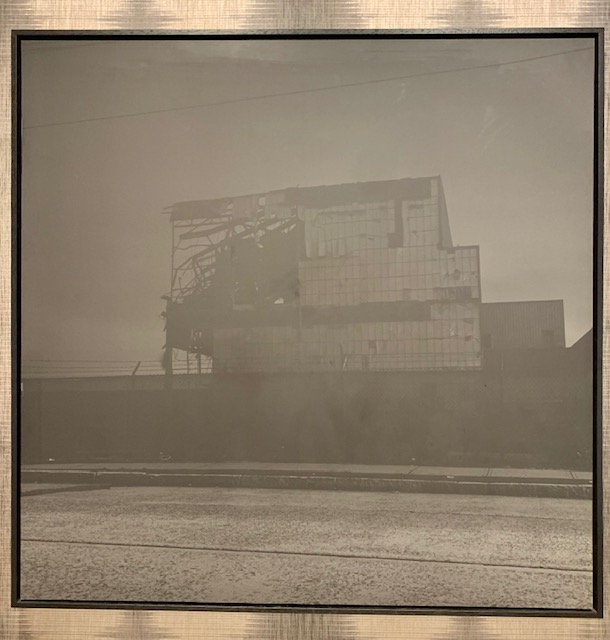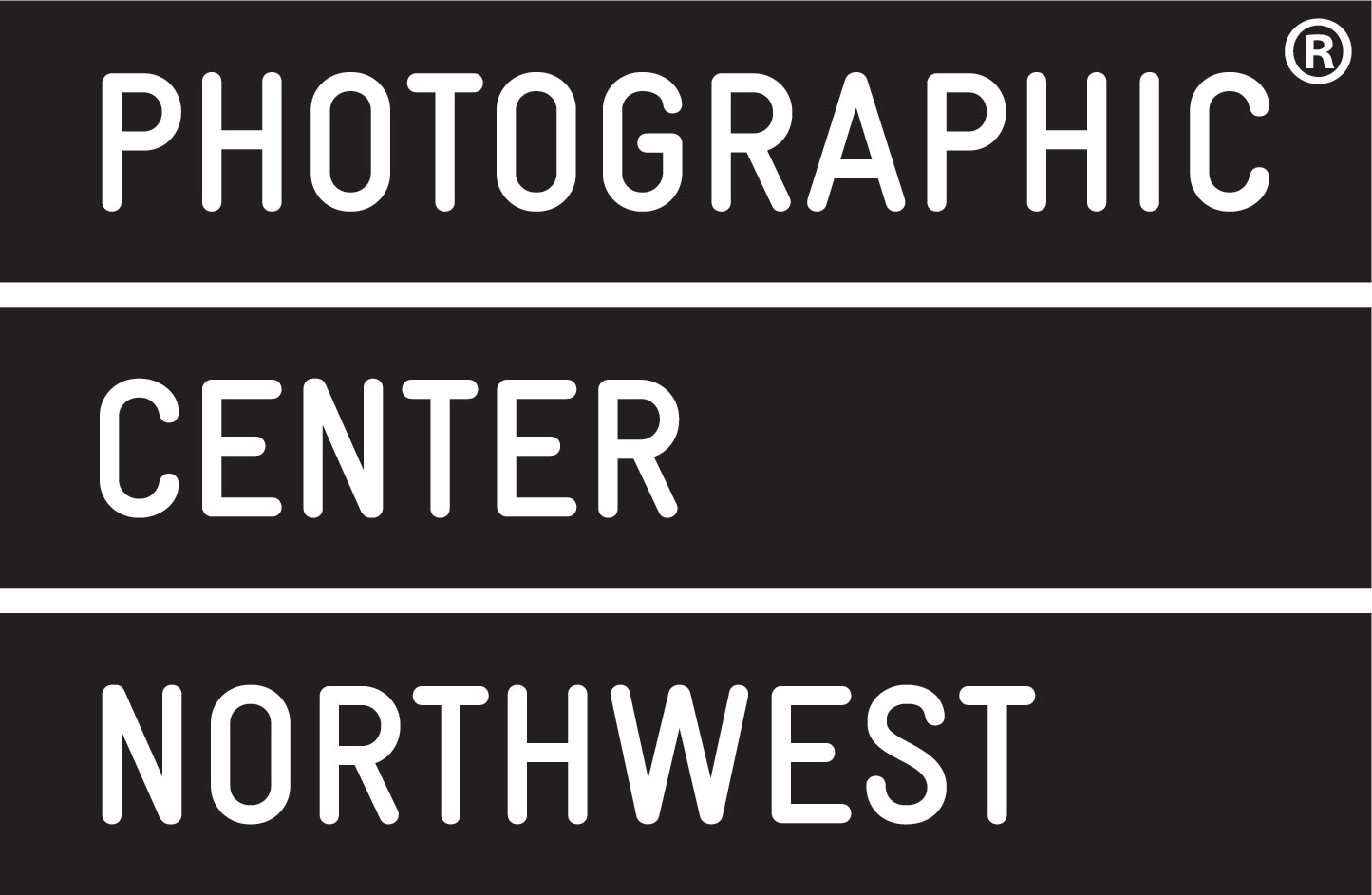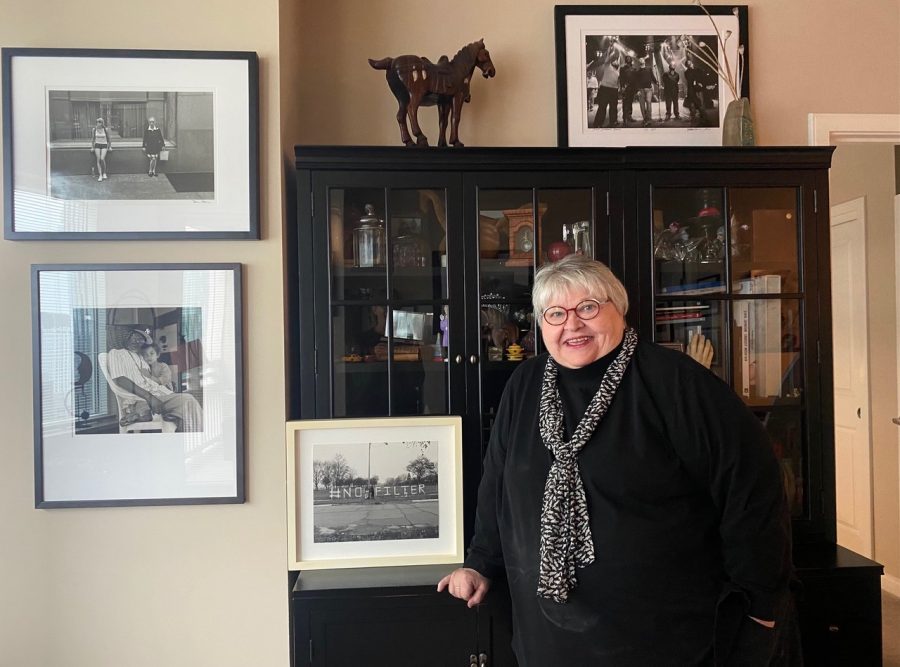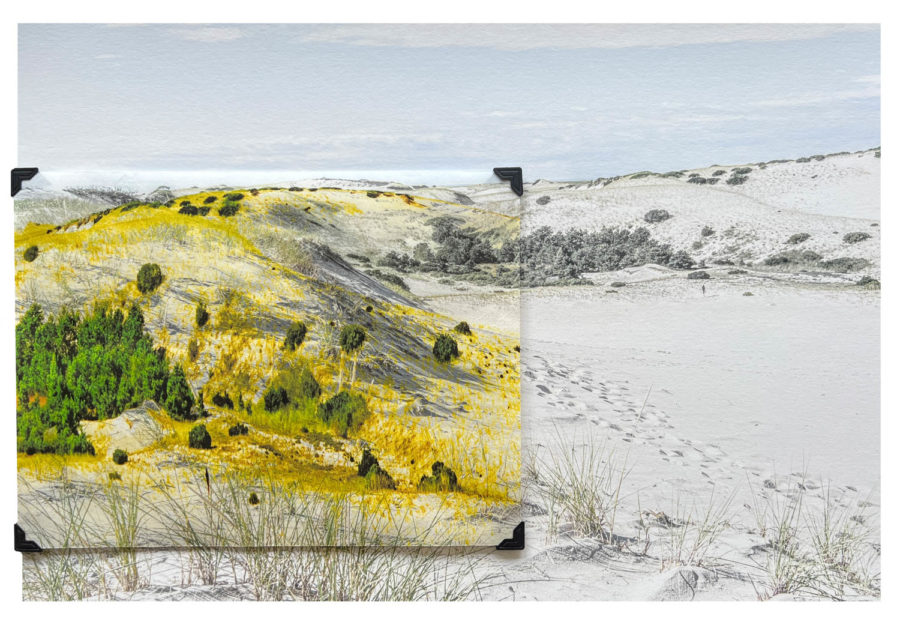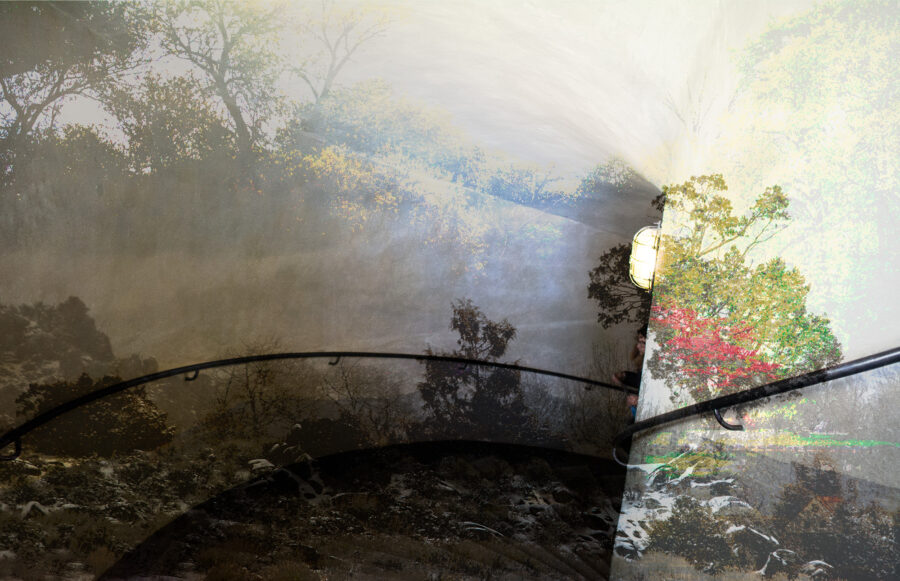A deeper look into the art of collecting photography with PCNW community members
Continuing our On Collecting series, Lisa Ahlberg, PCNW alumni and Benefit Committee member, spoke with Steve Hoedemaker and Tim Pfeiffer, business partners at Hoedemaker/Pfeiffer, an architecture and interior design business and Housewright, a home store and gallery.

Interviewer: Lisa Ahlberg
Interviewee: Steve Hoedemaker
Interviewee: Tim Pfeiffer
Lisa: Let’s begin with you telling me about yourselves and your connection to photography and the Photo Center Northwest.
Steve: I grew up in a household where art was an important part of how we understood the world around us, and where service to the art community was important. I’m currently the chair of the Henry Art Museum, and formerly the president of the PCNW board. My husband and I are avid amateur collectors.
Tim: I have played designer on many fronts. I curate the collections that we put together for Housewright, our home store and gallery, and better, have had the really nice opportunity to curate family collections for many of our clients. I too am a life long amateur collector. I have co-chaired the PCNW benefit auction a couple times and our firm is once again sponsoring the event with a table of guests.
I grew up in household that valued the stories found in work that hung on the wall. Whether that was a painting by a great grandmother, or old family portraits from our early history in the Northwest, I was super intrigued in the arts from a really young age and graduated in studio arts at the UW. I first studied architecture but also painted, sculpted, and took three years of photography. I went on to be more of a collector than a producer. Collecting work is like putting the bed cover on your bed, instead of sleeping under a sheet.
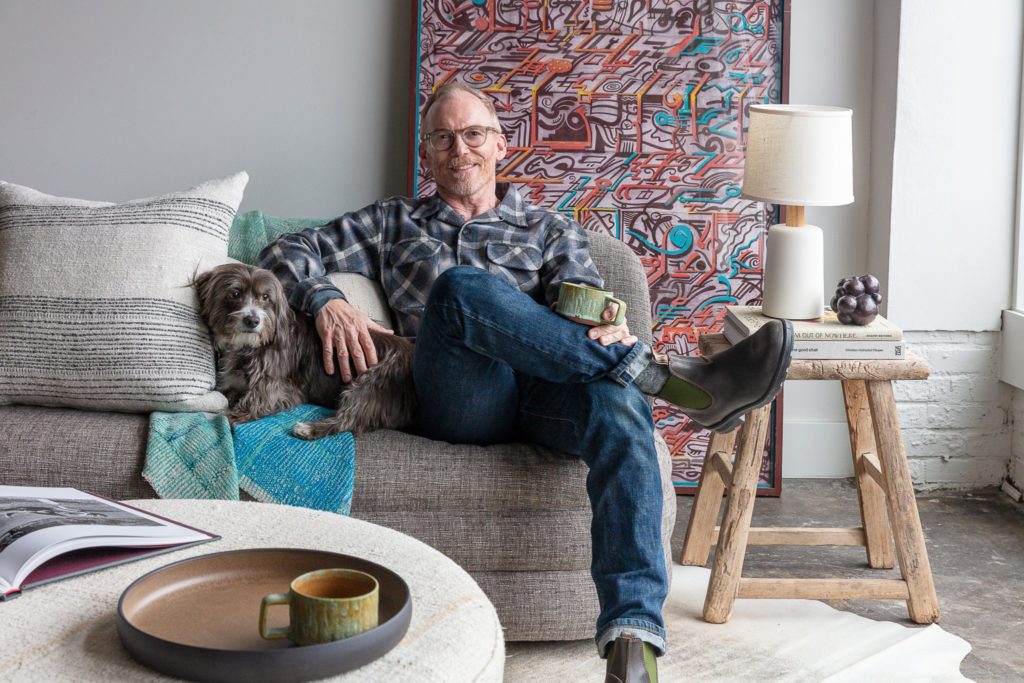
Tim and Jackpot (Tim’s Dog)
Lisa: You both create beautiful living spaces. Can you tell me what role art plays in a living space?
Steve: There’s a question that I like to ask myself and we often ask our clients: What stories do you want to tell yourself about who you are and what stories do you want to tell the world about who you are? The way you put together your living space, and especially your artwork, tells a big story to you and to the world around you about who you are and how you see the world.
Tim: We so often take a home, build a beautiful space, create these environments that are specific to ways of living within them. Then we start to layer in. The furniture is a piece of that certainly. Anybody could sit down and see a blank wall or see a television sitting on a wall. But art offers another dimension. You don’t need to have a moving screen to have a story being told in front of you. I think that’s so often what I find in any piece of art, whether that’s three dimensional sculpture, a beautiful photograph or a painting or wall relief. There’s a story that’s unfolding for you as you study it and really begin to see it. The work is always evocative of something. It brings memory, it brings new experience. It sets a time and place. I think it’s that final layer that makes a home a home and not just a beautiful house.
Lisa: Who has influenced you as a collector?
Tim: I’ve told this story before in different ways. The key influencer in my life was my grandmother, who was a major collector though a bit of a hoarder. At the same time, she was a woman who had come out of another era, a pre-depression era, where she had lived in a huge house with all kinds of gorgeous things that were connected to family. She treasured “the intrinsic nature of things.” This included a hallway of portraits because that was just the era. You didn’t have photographs necessarily, but you had some beautiful family portraits that had been painted over time.
When I was a little kid, she would take me around her very cramped, smaller home that she lived in then, where everything had come from this big other life. She would tell me what was important. She’d say, “This is a Serapi rug. Look at the patterns here. Then she’d take me into the little library zone. “These are first edition books.” When I looked at them, I could see what was important is that it was the first time I really saw them and oftentimes they had the original covers. She would show me every little kind of funny detail; ways of looking at everyday things such as silver. How to tell the marks on English silver versus American sterling? All the ways of finding out where china came from. I was a kid that just soaked it up and was constantly kind of the treasure hunter with her. Every single piece would have a story within. When I would find something and pick it up, she’d tell me a little tale about it. It was always about the things that man had made somewhere, somehow. That was usually within the realm of the decorative arts and that’s what got me going as a 10 year old.
Lisa: What advice would you give to somebody who’s starting an art collection or starting to buy art?
Steve: There is some wisdom that I have not myself adhered too much, but that I appreciate: Always collect the best possible piece you can from an artist or the best piece from a show or collection of an artist. I think there’s a lot of merit in that and particularly when you think about the potential future economics of well collected pieces.
I think the thing that has resonated for me is finding pieces that I can have a personal conversation with. That conversation is something that’s abstract enough that it can change and evolve over time so that a piece that may have meant one thing to me at a certain time can mean something else at a different point in the future.


Tim: I think work needs to speak to you. If you’re just getting going and you really don’t know where to look, start with Museum shows and gallery openings. there’s always going to be opportunities to study what is seen as collectible work. I believe you have to see something and desire it. There’s got to be a desire, a connection within you to live with that piece, to really feel as though you would want to live with it and love it. I have collected pieces here and there that I no longer have on the wall but are now in storage. But there’s nothing that I regret ever picking up — whether it was an inexpensive or expensive piece that spoke to me at the time.
I love walking around my house looking at each piece. Each tells a story, not just of the artist, and their intention but a reminder of the place and time where I acquired it or how it came home with me.
Tim: I think one of the best things anyone can do is take a picture immediately when you see something that captures your eye. Then walk away from it. Study. This can happen at art fairs or galleries or openings. Step away from it long enough to consider it. Consider it small in your hand and then imagine living with it in life scale. I think that’s always a really important thing to be able to do. At auctions, preview the work if you can.
Lisa Ahlberg: Do you buy much art online?
Tim: We look online when creating presentations for our clients. We do buy online and it’s a pretty deep dive into each one of those pieces. We use imagery that is available and then we’ll ask for further details and contextual imagery. I think those close detailed shots help to understand more clearly what it is that you’re looking at and how it’s been either layered or constructed. I think that’s always important. I’m not afraid of online art buying.
Tim: We have had a great focus at Housewright Gallery on Northwest Art, in particular Northwest School art. We’re having our first show of an East Coast artist, Alfredo Paredes with a collection debut and opening reception on October 13th from 5 pm – 7 pm.
Lisa: I loved the recent exhibit. Housewright is a dangerously tempting place to go in and I should let our readers know that it’s a beautiful curated store in addition to a gallery. I always appreciate the photography books you carry.
Is there an emphasis to what you collect personally? Do you collect photography?
Tim: I collect photography and have had an emphasis on painterly paintings. I like moody storytelling photography. I’m not much for just beautiful. I’m always captivated by the narrative within the context of the photograph. What am I seeing in it? It can be beautifully constructed, beautiful lighting, color, black and white. But I love when it actually tells me something, graphically telling a tale. I like mood. So I have a lot of work that is in darker, really deeper tones. I don’t mean dark in energy, it’s more just dark in its construct.
Steve: There was interesting beautiful Pacific Northwest art and photography in my house growing up. That work has continued to resonate for me. I’ve tried to find not only the work of some of those artists, but the other people who were practicing around the same time or who might have been their lovers. Or the work of those artists that was in a medium they didn’t often practice in. It’s just been fun to go back to something that meant something to me as a child and find different manifestations of it as adult.
Tim: I started collecting Northwest School work. There was obviously the iconic top four or five artists and then all of the people that were working in and around them, sometimes including students. I love early work before the artists have fully come to what they were most known for. The Picasso Museum in the middle of Paris is this small museum. It’s like this work is insane. It’s so beautiful, but it’s almost not recognizable. But it’s the purest, simplest forms of what he would later really become famous for.
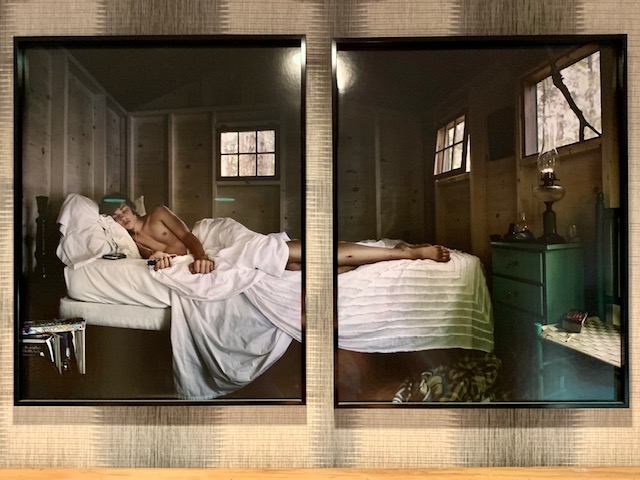
Tim: I have a very beautiful early work by Margaret Tompkins, Guy Anderson and Kenneth Callahan. I like paintings by Paul Horiuchi, work he did before collage work that he was best known for. Oftentimes these earlier works are more attainable because they are not seen as the iconic body of work. But some of them were the predecessors to the iconic work. So that’s always really fascinating to me.
I love portraiture too, whether photography or painting. I have some that are incredibly abstract that can be difficult to call portraiture. The earliest one is from 1887. One portrait I have was a gift for my 60th birthday – a portrait of an auburn haired, red mustached Spanish man and was the best painting I ever found. I fell in love with it! It took quite a negotiation to get the family that owned it for generations to release it to me.
But that guy is sitting next to a portrait from Paris. You can barely see form to the face and is a very abstract portrait of a man. They are on one either end of the dining room. I love that whole nature of capture. That’s what I think is so interesting about photography — the figure in photography.
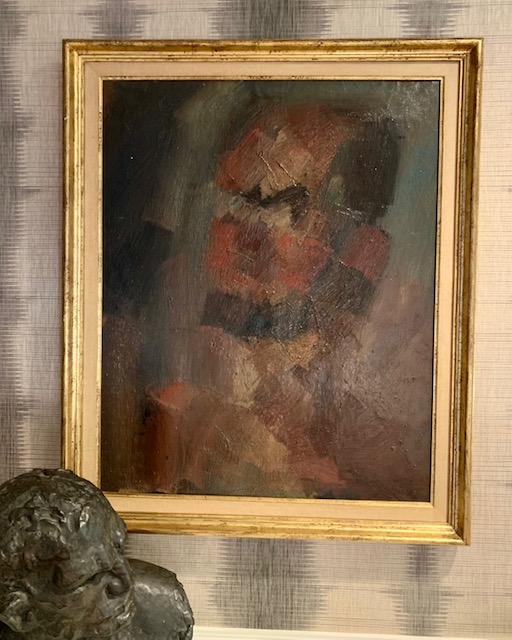
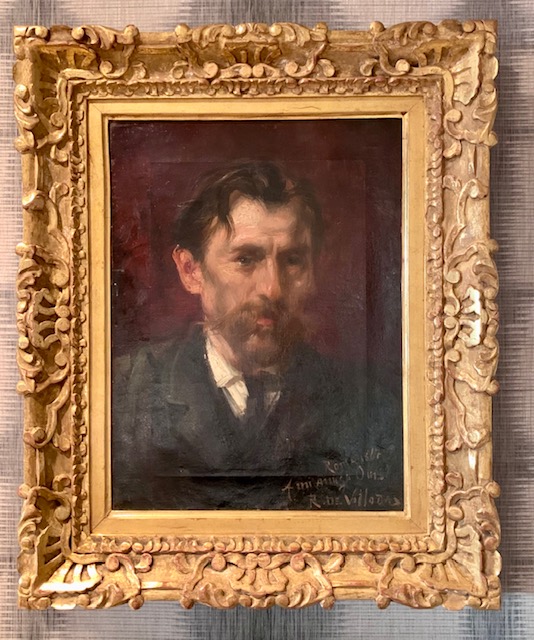
Lisa: You both have attended several PCNW auctions. Can you tell me about some of the photographic work you love that is still with you?
Tim: A favorite is Cindy Sherman, 2014 by Doug Keyes. He had photographed multiple Cindy Sherman’s and layered them together to create this concept of Cindy Sherman. It’s the most beautiful photograph.
I have another beautiful piece by Annabel Clarke that kind of predates the pandemic and homelessness. It’s this young couple in a tent, with a just a few possessions sitting on pallets. They are homeless and yet there’s some joy about the whole situation.
I’m a huge Jenny Riffle fan and I’ve always picked up her work. A favorite is from her Scavenger series of a young man sitting in a room smoking a cigar and counting change in a pot. It’s so magical to me. It’s hanging in my living room. I look at it like every day and every day I find some kind of wonder in it.
I think that’s what collections should do for you – enable you to wander around, look at your pieces, and feel something each time and not just pass it like wallpaper.
Steve: I live with many photographs from PCNW auctions. A few photographs in my collection include the great Mexican photographer Graciela Iturbide and Pacific Northwest photographers Eirik Johnson, Jock Sturges, Rafael Soldi and James Lockwood. A favorite photograph comes from my childhood, a photograph by Mary Randlett that belonged to my parents.
Lisa: I loved the Mary Randlett photographic portraits you had alongside the paintings in the last exhibit at Housewright Gallery of the Northwest Influencers.
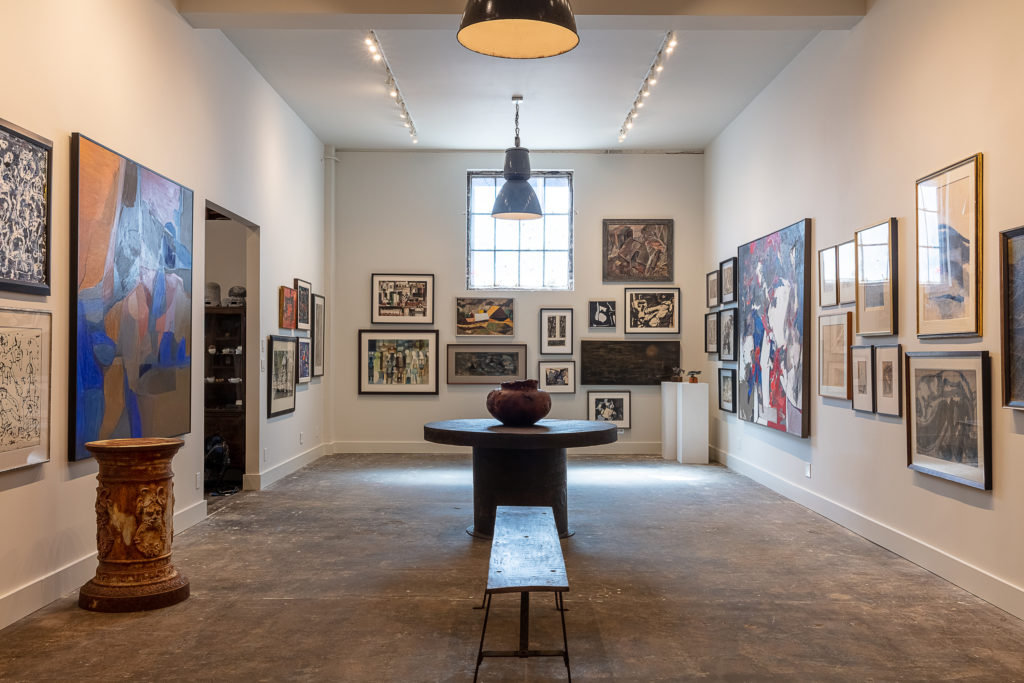
Housewright Gallery NW Influencer Exhibition
Tim: That was so cool to be able to find as many of those as we did. Those were all gifts to the show. What’s even more remarkable, as I ran across all the books that accompanied the exhibit, every single one of those Northwest School were all inscribed by Mary Randlett, telling the stories of when she photographed those people and how she met them.

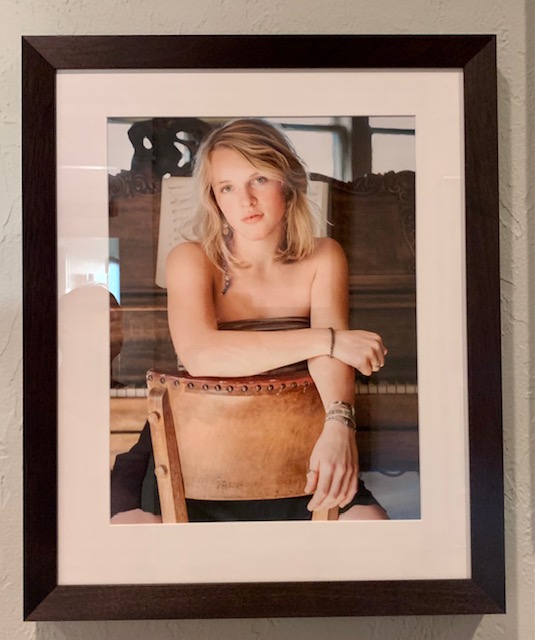

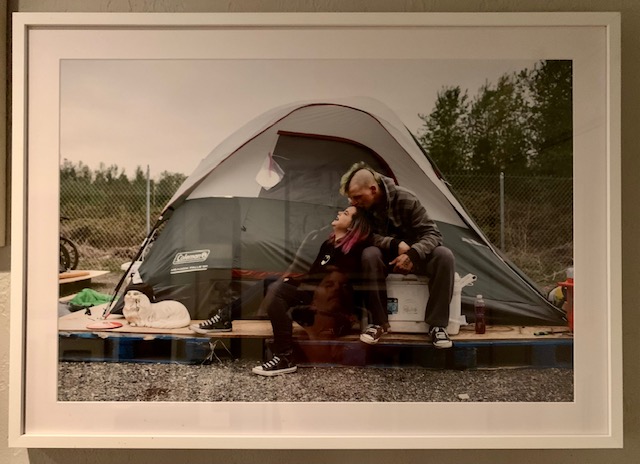
Lisa: As we approach the PCNW Benefit Auction can you comment on what role an auction can play in helping to build an art collection?
Steve: I think that Photo Center auction specifically helped me feel like a collector because so much of collecting is just opportunity. You have the chance to be with the art and the artists in the space. It is a big first step in terms of getting you down the path. The worst thing that’s gonna happen is you buy a piece you might not be certain about, but you’re going to support an organization that you care about.
Tim: I think institutional auctions particularly give you a sense that everything has been accepted by the institution as works of quality and integrity. So in many ways the work has already been vetted for you. That is something you can really enjoy at an auction — it’s a very safe place to collect.
